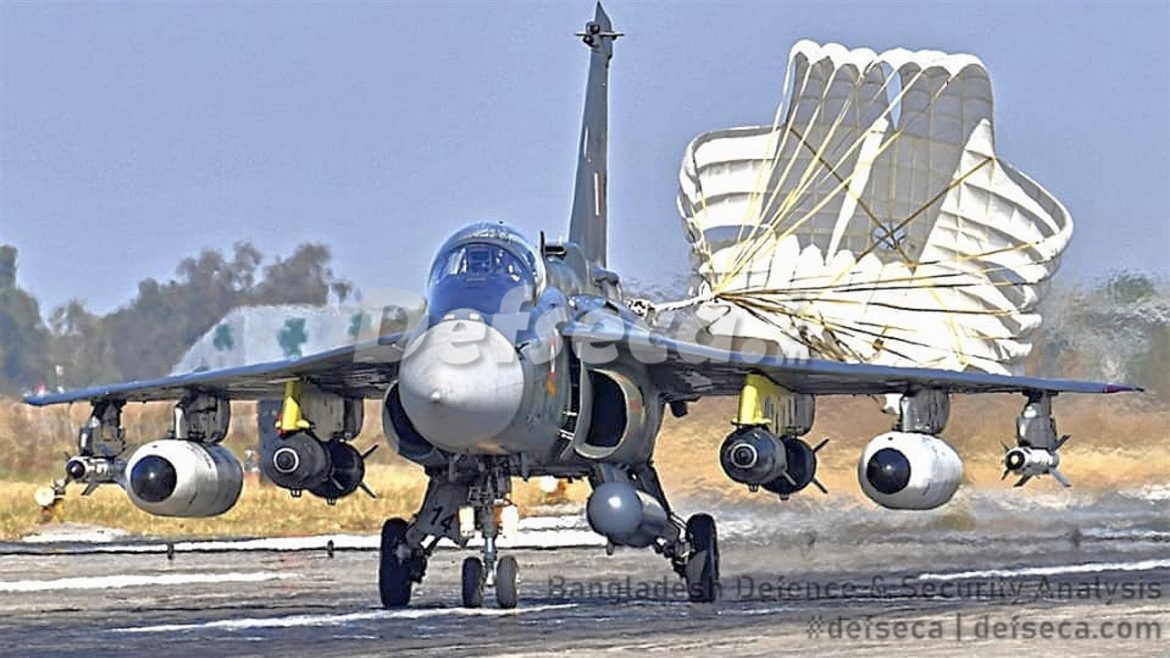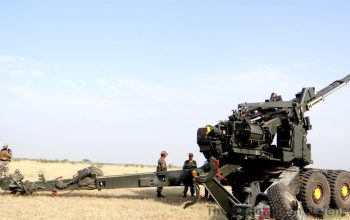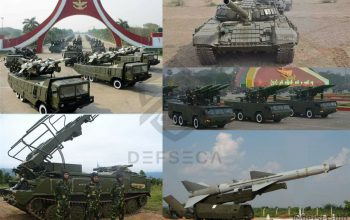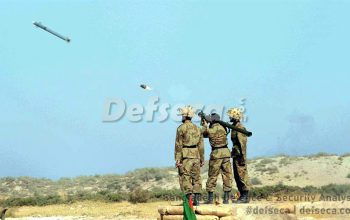The Indian Air Force is deploying its indigenously built Tejas Light Combat Aircraft (LCA) along the border with China and Pakistan.
This is a significant development that is expected to boost the operational capabilities of South Asia’s most powerful air force even further.
A contrat for procurement of a further 83 aircraft is expected to be signed between the Indian Air Force and the Hindustan Aeronautics Limited (HAL).
At present the Indian Air Force deployed two squadrons of LCA fighters under the Southern Air Command at Sulur with the 45 Squadron (Flying Daggers). The second squadron (18 Squdron – Flying Bullets) also based at Sulur received its Final Operational Clearance (FOC) on 27 May this year.
The Indian Air Force has equipped its forward airbases in the West and North to operate effectively during any untoward incidents along the border. Fighter aircraft are being flown extensively in both day and night operations to maintain the operational readiness of the Indian Air Force.
The HAL Tejas is a light multi-role capable fighter aircraft powered by a single engine. It achieved its first flight on 4 January 2011 and was introduced in to the Indian Air Force by 17 January 2015.
The Indian government spent $1.6 billion on the fighter programme with each fighter costing $39 million for the Mk 1A variant in 2020.
The Indian Air Force plans to operate 324 variants of the Tejas fighters in several variants including twin-seat trainers. The delta wing fighter has a length of 13.2 m and a wingspan of 8.2 m. Its empty weight is 6,560 kg and maximum takeoff weight is 13,500 kg. The aircraft has an internal fuel capacity of 2,458 kg and can be equipped with external drop tanks on the inboard pylons and the under fuselage.
The Tejas is powered by a General Electric F404-GE-IN20 turbofan engine that outputs 53.9 kN of dry thrust and 90 kN with afterburner. The maximum speed is Mach 1.6 in high altitude whereas range is 1,850 km. The aircraft has a combat range of 500 km and a ferry range of 3,200 km with internal two external drop tanks. The thust to weight ratio of the aircraft is 1.07.
Armaments include a 23 mm twin GSh-23 fixed internal cannon and 8 hardpoints for carrying a total payload of 5,700 kg. Payload can include a locally made air to air missiles as well as R-73, I-Derby ER and ASRAAM. Anti-ship cruile missile such as the Kh-35, Kh-59ME, Kh-59L and Kh-59T are also capable of being carried by the Tejas. The BrahMos-NG is also expected to be certified for the Tejas Mk 1A later.
Other munitions include NGARM, Spice PGM, KAB-1500L LGB, RKB-500 cluster munitions and Russian unguided bombs.
The Tejas Mk 1 is equipped with the Elta EL/M-2032 multi-mode all weather fire control radar with day and night capability. The Tejas Mk 1A will be equipped with the EL M-2025 AESA radar with EL/L-8222 ECM pod for the early production models. Later batches are to be equipped with the indigenously built LRDE Uttam AESA radar and DARE United Electronic Warfare System (UEWS).
An internal audit by the Comptroller and Auditor General of India and the Indian Air Force found deficiencies in the Tejas LCA program relating to performance shortfalls in safety, lack of AESA radar, shortcomings with the RWR and cost overruns that is almost 20 times the project cost estimations.
The Indian Air Force wants HAL to integrate an AESA radar, long range BVR missile, air-to-air refueling capability across all models and an updated electronic warfare capability.
Every aircraft program has its challenges and short comings including even the best designed combat aircraft that limit the real potential of the platforms.
Another limiting factor is HALs production, which is very minor compared to aircraft manufacturers in USA, Europe and China.
Countries such as Malaysia and the United Arab Emirates showed some interest on the Indian made fighters. The fact that the Indian Air Force was forced to use its aged MiG-21 fighters during the recent border skirmish with Pakistan proves the aircraft has not been widely deployed to frontline units possibly due to performance issues.
Nevertheless the HAL Tejas is a matter of pride for the Indians. It is an aircraft that will see continued improvement that is expected to iron out remaining deficiencies in time.
India may seek to export its locally built fighters to neighbouring countries such as Bangladesh, Myanmar and Sri Lanka to boost its defence exports in the future if the aircraft proves to be successful in service with the Indian Air Force. Successful combat deployment would go a long way to prove its capabilities in front of the world.




